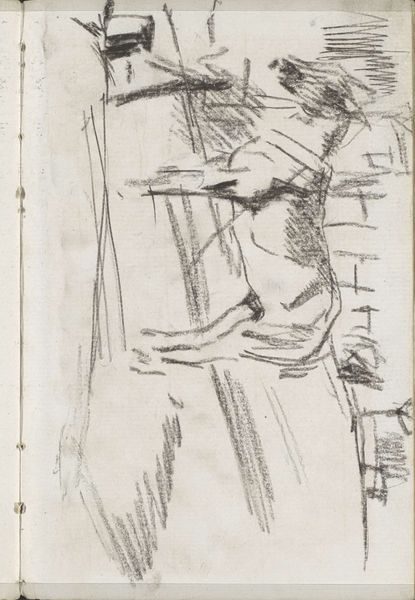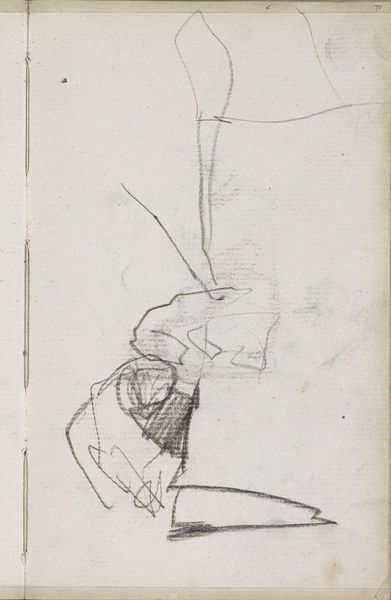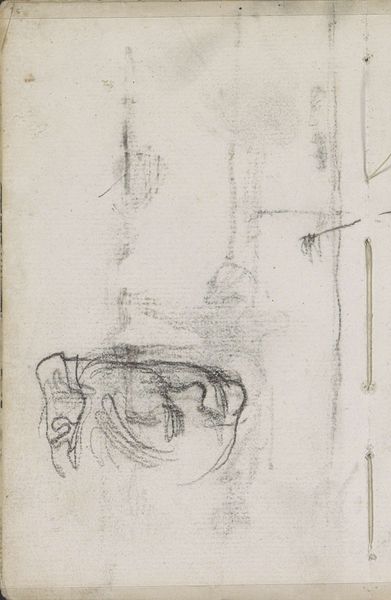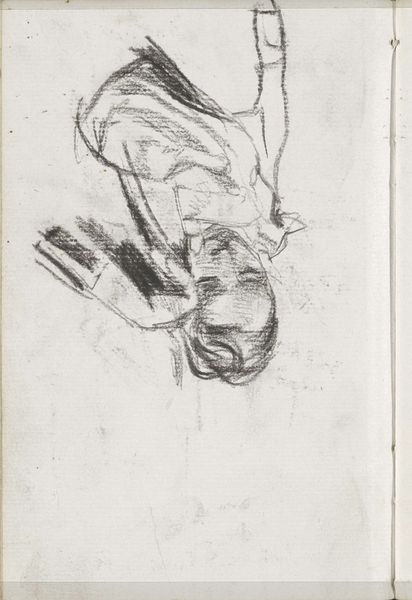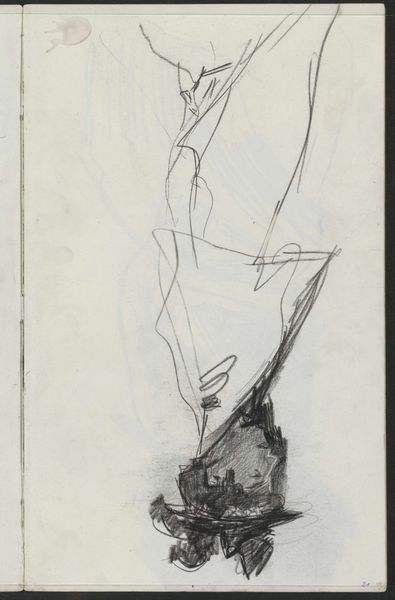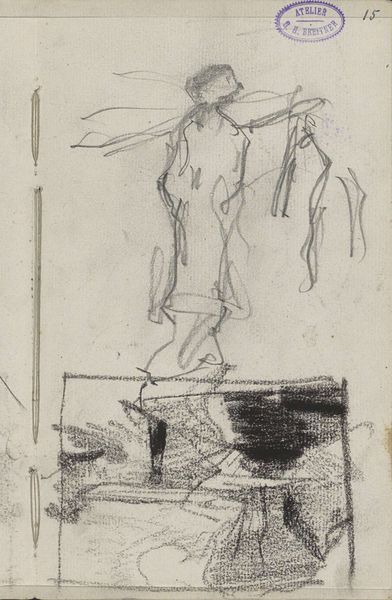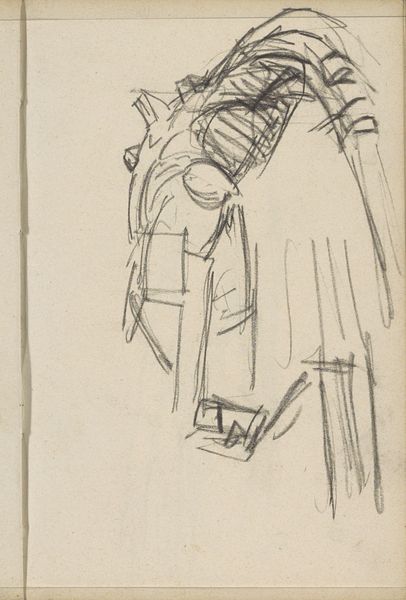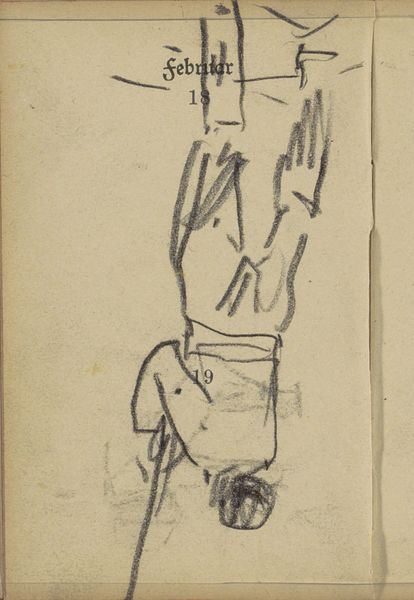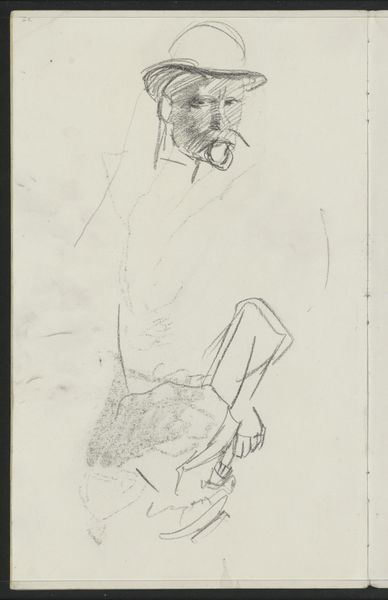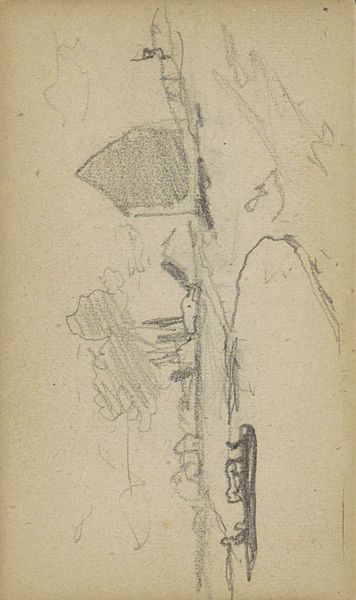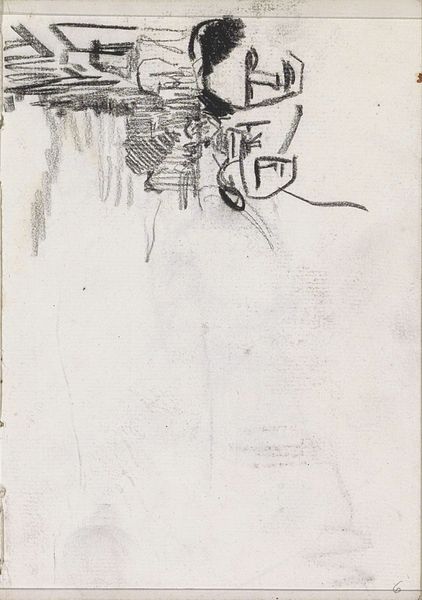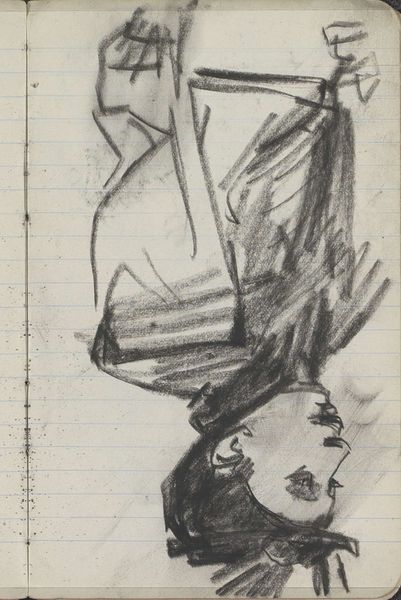
Copyright: Rijks Museum: Open Domain
Curator: Welcome to the Rijksmuseum. We're standing before Isaac Israels' "Straatgezicht en een vrouw met een kom," a drawing that likely dates between 1886 and 1934. Editor: Well, my first impression is one of fleeting observation. There's an ethereal quality, an incompleteness that's really captivating. The sketchwork suggests a quickly captured moment. Curator: It's rendered in pencil and ink. Knowing Israels' fondness for depicting everyday life, especially in urban environments, it's plausible this was jotted down in a sketchbook while he was out observing the social landscape. We can speculate about his interactions within that society. Was he attempting to reveal a truth or just working to improve his technical skills in observation and line? Editor: Interesting, but for me, it’s about the composition. Look at the stark contrast between the defined upper portion and the almost vacant lower section. That asymmetry creates a compelling visual tension. It begs the question, is the foreground merely a structural element, or does it hold symbolic meaning by what is *not* there? Curator: I would argue that the materiality points to the accessibility of art during this period. Paper and pencil being readily available, especially when juxtaposed against oil paints used at that time. These are tools accessible to the working class. And it can show a democratization of artistic expression if studied through that lens. Editor: I see your point. And even beyond the economic side, notice how the rough lines give the piece a sense of spontaneity. The figure of the woman with a bowl is captured so efficiently, her posture and weight hinted at with minimal strokes. How the artist achieves that illusion of form with so little, intrigues me. Curator: It does present questions around labor and class. What is in the bowl, is it alms or something that has value and is it hers? What commentary is he trying to make on poverty? This era saw increasing industrialization. Editor: Perhaps the emptiness below emphasizes the uncertainty and instability she faces in her life. Either way, Israels captured a unique blend of sensitivity, directness, and modernism, wouldn't you agree? Curator: I suppose in this image there is a direct connection to the common man with common tools, and one could infer social challenges within this particular time. It's a potent glimpse into Israels' artistic process and, possibly, the societal realities he sought to capture. Editor: Indeed, and it underscores how much meaning can be conveyed through the simplest of means, and its visual syntax, perhaps speaks to those living today who find so much emotion within minimal tools of artistic creation.
Comments
No comments
Be the first to comment and join the conversation on the ultimate creative platform.
